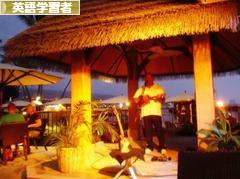「伝統医療 in Africa」がわたしのブログ内のランキングに入りましたので、英語バージョンもUPしてみました。
これが「伝統医療 in Africa」について考えた最終稿です。
Today’s topic is the role of traditional
medicine and traditional healers. This idea comes from a book whose title is Congo Journey. It is a nonfiction book
written by a British explorer, Redmond O’Hanlon. He explored a virgin forest in
People’s Republic of the Congo (now the Democratic Republic of the Congo). His
purpose was to search for the living dinosaur, Mokele-Mbembe, in Lake Tele with
an American ethologist, Lary Shaffer and a Congolese biologist, Marcellin
Agnangna. It was around 1990, so they of course, lived in modern society and
they were absolutely supposed to have rational and logical thinking. But
Redmond and Lary had a sorceress divine the success of their expedition.
This episode reminded me of an article in a
newspaper. Its title is “the South African Government utilizes traditional
healers”. The standard of the living in South Africa is high, but ordinary
people mostly rely on traditional curers who use medicinal herbs and ancestorial
worship. It is because they have to pay much money for high quality treatment
at private hospitals, and consequently, public hospitals are always crowded for
people in need. About 27 million people out of the population of 48 million
count on traditional medicine.
In South Africa, sorcerers or traditional
healers are called Sangoma. Sangoma are not only magical pradtitioners but also
curers who manage folk remedies. The article introduces Sangoma, Anica Mcondo.
Her methods are the same as other sorcerers. She does not question the
condition of a patient. Instead, she casts a handful of cowrie shells, pieces
of animal bones or pebbles across a raffia mat. Ancestors’ spirits rest in these
things. She tells patient’s condition from its formation, and compounds plant
powder. Then, what is difference between Ms. Mcondo and other general
traditional healers? She has studied a short-term course in University of the
Witwatersrand which boasts of the best educational standards in South Africa. Her
herbs in plastic containers are classified systematically and displayed in line
in an orderly way. And she also writes her patient’s case record.
The University has a four-week course for
teaching the knowledge of modern medical care, prevention of AIDs, business
administration and the law. These courses can assist traditional healers in
identifying illnesses beyond their capacity to treat. In addition to this, the
South African government brought the Traditional Medicine Law into being in
2007, and has prepared the national certification system of traditional health practitioners.
Sangoma are originally people who are
particularly sensitive to the spirit world. In general, African people think
that there is a primary spiritual factor in disease and luckiness or
unluckiness. And Sangoma also tell people’s fortune, hold purification
ceremonies and make good-luck charms. Therefore, they need to apprentice
themselves to experienced master Sangoma. The master gives them permission to stand
on their own when they finish the training. They must learn the way of treating
herbs, prescribing medicine, identifying patients’ problems by using afflatus.
In other words, basically, they are already qualified as curers.
Accordingly, it becomes a matter in hand
whether their treatments have medicinal benefits, or not? Sangoma use thousands
of herbs, for example, mint which is effective for the circulation of the
blood, mugwort (よもぎ) which is effective for a cough and
willow which is an effective painkiller. Western medicine tends to deny
traditional medicine because it does not have scientific evidence. But, an
estimated 70% of modern drugs were derived from plants first used
traditionally. Recently, scientists have identified one plant extract that acts
like an antiretroviral drug for AIDS. This plant has been well-known as a
traditional medicine for AIDS in South Africa since long ago.
It is said that collaboration between
traditional healers and conventional doctors is especially profitable for HIV
remedies. Traditional healers are respected within their communities. It means mutual
trust has been already structured between healers and patients. And, they know
how to convey health information in a culturally appropriate manner. They are
ideally placed to teach HIV prevention, distribute condoms, conduct counseling,
encourage HIV testing, and set up support groups for affected people. Their
relationship also might boost immunity and relieve stress. Furthermore, it is
important to refer that traditional healers also provide immediate and cheaper treatment.
In any case, the primary importance is to ensure
the certain ability standard of traditional healers. Besides South Africa, the
same kinds of institutions are found in some African countries, for example THETA
in Uganda, TAWG in Tanzania, PATF in Zambia.
In conclusion, although people believe that
Sangoma cure disease by manipulating afflatus or incantation, they can
experientially give a diagnosis by observing a patient and grasping symptoms
like as so-called good doctors. And, Chinese or Japanese Kanpo and European
herbs also used to be accused of superstition or an unscientific way of
thinking. But, nowadays, they are admitted as effective treatment like as
conventional one. Modern medicine is scientific. On the contrary, traditional
medicine is empirical. Even if traditional medicine, yet, has not been proven
scientifically, thousands of years of historical experience has proven its
benefits, hasn’t it? What’s more, if the government gives consideration to traditional
healers, it will lead to conservation of their knowledge inherited generation
after generation.
(PATF; the Copperbelt Province AIDS Task
Force) (the Tanga AIDS Working Group (TAWG) of Tanzania)

にほんブログ村


0 件のコメント:
コメントを投稿